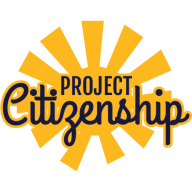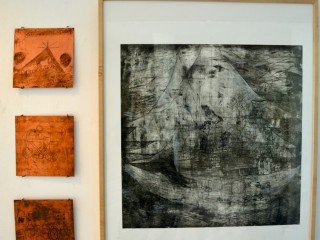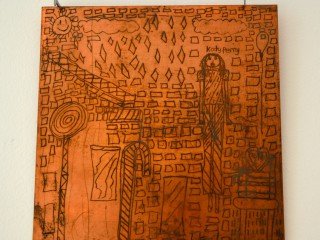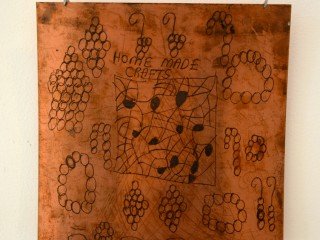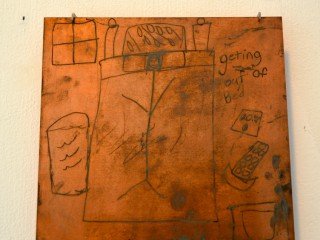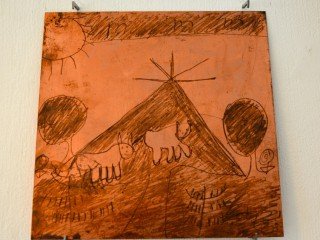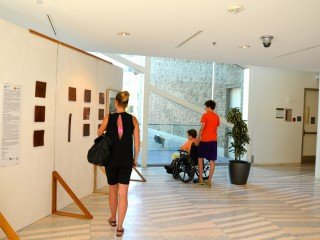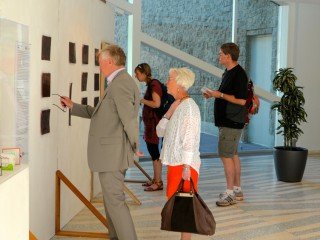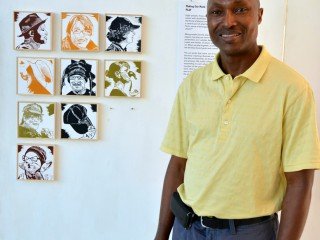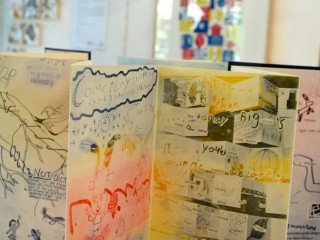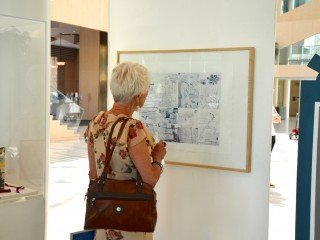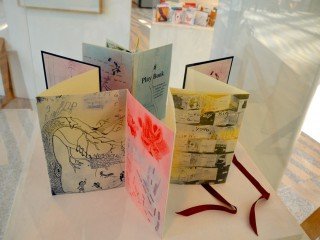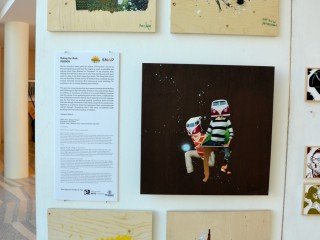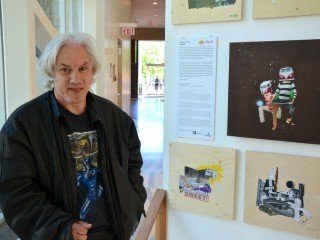Making Our Mark Opening Reception at City Hall
On Sunday, June 22, the Making Our Mark exhibition held its opening reception at City Hall, as part of the 2014 Works Art & Design Festival.
Making Our Mark emerged thanks to an Edmonton Arts Council grant which brought together professional SNAP Gallery artists, University of Alberta Anthropology students, and Skills Society support workers. This collective met weekly throughout the Spring of 2014 in the SNAP print shop to share stories and make art together, in order to explore three themes that relate to Citizenship: Pride, Play, and Freedom. The project aimed to inspire fresh thinking about the diverse and rich perspectives that citizens with disabilities bring to our communities. Through collaboration with professional artists, Making Our Mark enhanced the value and visibility of these perspectives.The
Making Our Mark exhibition will remain on display at City Hall through July 3.
Making our Mark Art Opening video for City Hall from project citizenship on Vimeo
.
Pride
The Pride group explored the way in which overcoming the shame inherent in social oppression allows individuals to develop a positive sense of identity. The works that were produced from this group indicated the way in which disabled citizens view ordinary experiences and everyday accomplishments, like growing up as part of a family, being a valued employee of a movie theatre, or learning to ride a bicycle, as integral to their positive self-image. Participants captured stories about these experiences and accomplishments on etched copper plates. Artist Lisa Rezansoff also created an intaglio print that explores the theme of Pride. The print depicts a boat, representative of the strong and dynamic community that is built when everyone's ideas, knowledge, and perspective are valued, and each person's stories and contributions are included. The boat sails over waters that can be rough and uncertain, or calm and clear, yet the vessel remains resilient and sturdy, growing ever stronger.
Play
The Play group, who worked with SNAP artist Sara Norquay, explored the important questions of “How can play become a central part of what builds community? How does play help us find a sense of belonging? And how does play relate to being a good citizen?” Play can refer to formal games played by skilled players, but play can also come about spontaneously, creating its own parameters as it unfolds. This latter form of play depends on flexibility, which is also a key component of being a citizen who acknowledges the needs and wishes of others. Both playing together and working together as citizens involve the development of shared goals and a sense of belonging. The group produced collaborative books and woodcuts with the goal of responding to and playing around with each other’s ideas about citizenship. The group discovered that play works best when everyone takes turns, when everyone is open to others, and when everyone has fun and the opportunity to be creative. One of the members of this group, University of Alberta Anthropology Masters student Carmen Norris, said she had a ton of fun sharing ideas and creating art with this group. She says, “I just had to be involved … Finding new ways where art can help heal, can give people a voice, and can help create a sense of community.”
Freedom
The Freedom group, who worked with SNAP artist Adriean Koleric, arrived at similar conclusions to those of the Pride group. Namely, participants all had visions of freedom that centered around normal, everyday, seemingly mundane moments (such as relaxing at home watching TV, working on Art, or simply thinking about family). Koleric says that this insight has given him a new perspective and respect toward those dealing with everyday challenges. The group produced individual collages on wood panels, which came together as a cohesive body, representing their community and overall strength. Scott Berry (pictured below), an artist who happens to have a disability, discussed his collage with a University of Alberta student: “For Scott, art itself is a means of personal freedom. He had the choice to portray his vision of freedom through whatever items he wanted, whether that is totem poles, aliens, or humans with chicken feet. This entire collage is intended to represent freedom of speech; the ability to speak up in any situation without fear of oppression. Freedom of physical movement, the ability to go places in the world, is expressed through the car, going from the city to the country. Scott also believes that we are very lucky to have freedom in Canada because not all countries have the same luxury”.
By Alexandra Duncan
